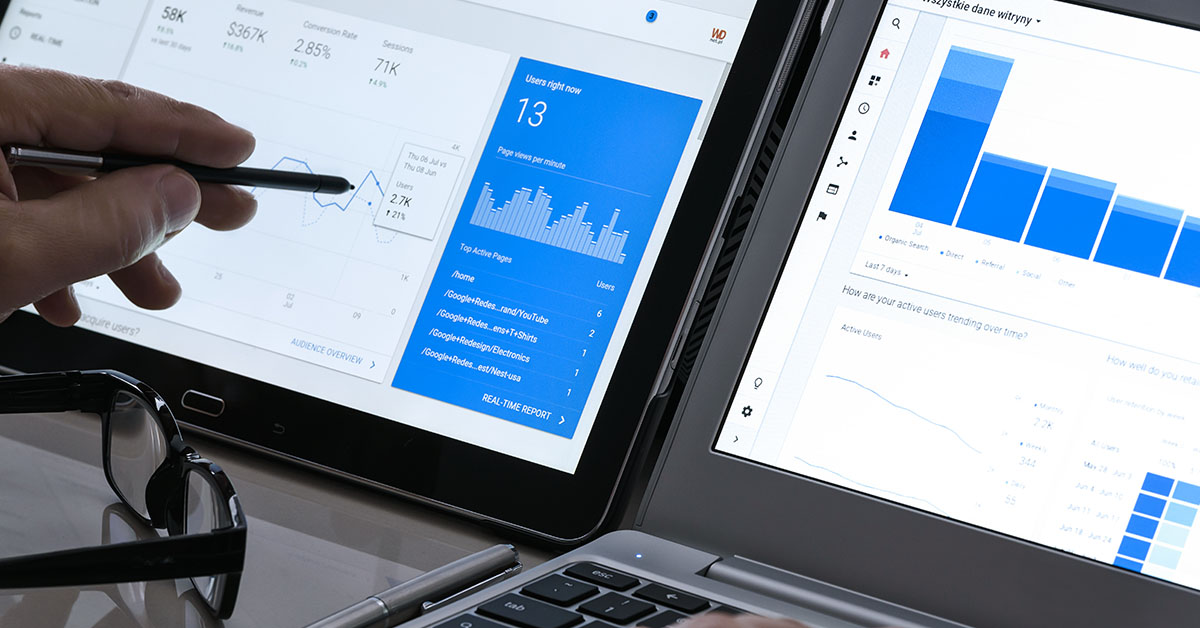Understanding how to leverage overseas website traffic will help you set your sails in the right direction and generate the sales in your target market.
Here are three ways in which to leverage your overseas website traffic:
1. Domain names and Hreflang
When creating a multilingual website, you may consider buying a .com domain, which is considered a country code neutral domain, or a specific country code domain, such as .co.uk for the UK or .de for Germany.
The advantages of using a country code domain is that your target audience will recognise the familiar domain and that you are active in this country. In addition, with a corresponding email address, you may be communicating that you are able to offer customer service in the language spoken in of country-specific domain name.
CSA Research (2020) found that 75% of respondents say that they’re more likely to purchase the same brand again if customer care is in their language. Buying a country code domain also safeguards your brand against the competition, as you prevent any competitors from buying the domain before you do.
A disadvantage of using a country code domain is that every variant acts as it’s own website, so the login details will be different and each domain will have its own reputation on the search engines. In addition, owning a county code domain comes with potential legal and regulatory requirements specific to the country, including data protection laws, privacy regulations, and consumer protection rules.
Alternatively, you can use Hreflang. Hreflang is an HTML attribute used to indicate the language and regional targeting of web pages in multilingual and international websites.
An advantage using Hreflang is that you keep your original domain. It is preferable that you use a country code neutral domain, such as .com, .net or .org but it is not essential.
Another advantage is that Hreflang allows you to direct the right content to the right audience based on their language and location. This means that users are more likely to land on pages that are relevant to them, creating a seamless and personalised user experience.
It also highlights to search engines that your website contains similar or duplicated content on different pages, but are in different languages. Therefore, your website is not being penalised for duplicated content and your SEO ranking is not negatively affected.
A disadvantage of using Hreflang is that maintenance can become challenging, especially if you have a large and dynamic website. As your website evolves, adding new pages, changing URLs, or adding new languages can require ongoing updates to hreflang tags.
Another disadvantage is that Hreflang annotations are primarily designed for HTML pages, which might not cover all the types of content your website offers, such as PDFs, videos, or other non-HTML content.
2. Localised content and customer support
According to research, over 70% of internet users will not buy online if the information they read isn’t in their native language.
Even if your website isn’t an ecommerce platform, engaging with your international visitors in their native language will considerably increase the chances of them contacting you for further service.
When it comes to websites, translation alone can leave some key technical, cultural and branding elements behind, especially if you use machine translation with no human checks. This is where localisation takes your website to the next level.
When you localise a website, you don’t only translate content, but also adapt currencies, measurements, date format, symbols, colours, navigation, coding, search engine optimisation (SEO) keywords and more.
For example, did you know that the ‘thumbs up’ symbol is considered offensive in the Greek culture?
If your website includes images and icons, make sure they have the same meanings and connotations in your target markets. If they’re likely to offend certain readers, and not have the same impact as other symbols would, replace them. The same goes for colours.
If you localise your website for non-English speaking visitors, then it is important to be prepared to respond to enquiries in the user’s native language.
Whether you have a chat facility on your website, a contact form or simply an e-mail address, make sure a native or proficient speaker in or outside your team (such as a translator) can reply accordingly. If you opt for machine or AI translation for replying to enquiries, watch out for any main errors!
A FAQ section in the target language can also become handy.
3. International SEO
When it comes to multilingual SEO, remember that different countries and cultures search for things online in different ways, and a literal translation of your English keyword will probably not be sufficient.
Some countries share the same language but have different language variants. For example, in the UK we call a sweater a jumper, but in the USA, a jumper is someone who jumps out of buildings or bridges.
You need to know this if you sell jumpers to the USA and be aware that your potential American customers won’t be searching for jumpers on Google if they want a sweater.
Other differences are more down to culture. For example, let’s look at the food sector and use the UK and the USA again.
If you’re a UK sauce producer and want to market your spicy sauce in the USA through your e-commerce website, you may want to include keywords in there such as taco sauce, because tacos are a very popular meal in America and Americans may be searching for taco sauce online.
In addition, seasonal products and offers will also require careful consideration. Many cultures share more or less the same holiday seasons; however, how about Mother’s day, for example? Again, looking at the UK and the USA, Mother’s day is celebrated on different days.
Therefore, if you sell gifts online and want to target the American audience you may want to add Mother’s day gifts as a keyword to your website, to your blog or to your advertising campaign.
We recommend a keyword research and implement your keywords for each market you are targeting, taking into account linguistic and cultural considerations, alongside product and service considerations.
Local to Global helps you overcome cultural, linguistic, and branding barriers when exporting your products or services to international markets.
If you have any questions on taking your brand from local to global, then get in touch with us: hello@localtoglobal.uk.















